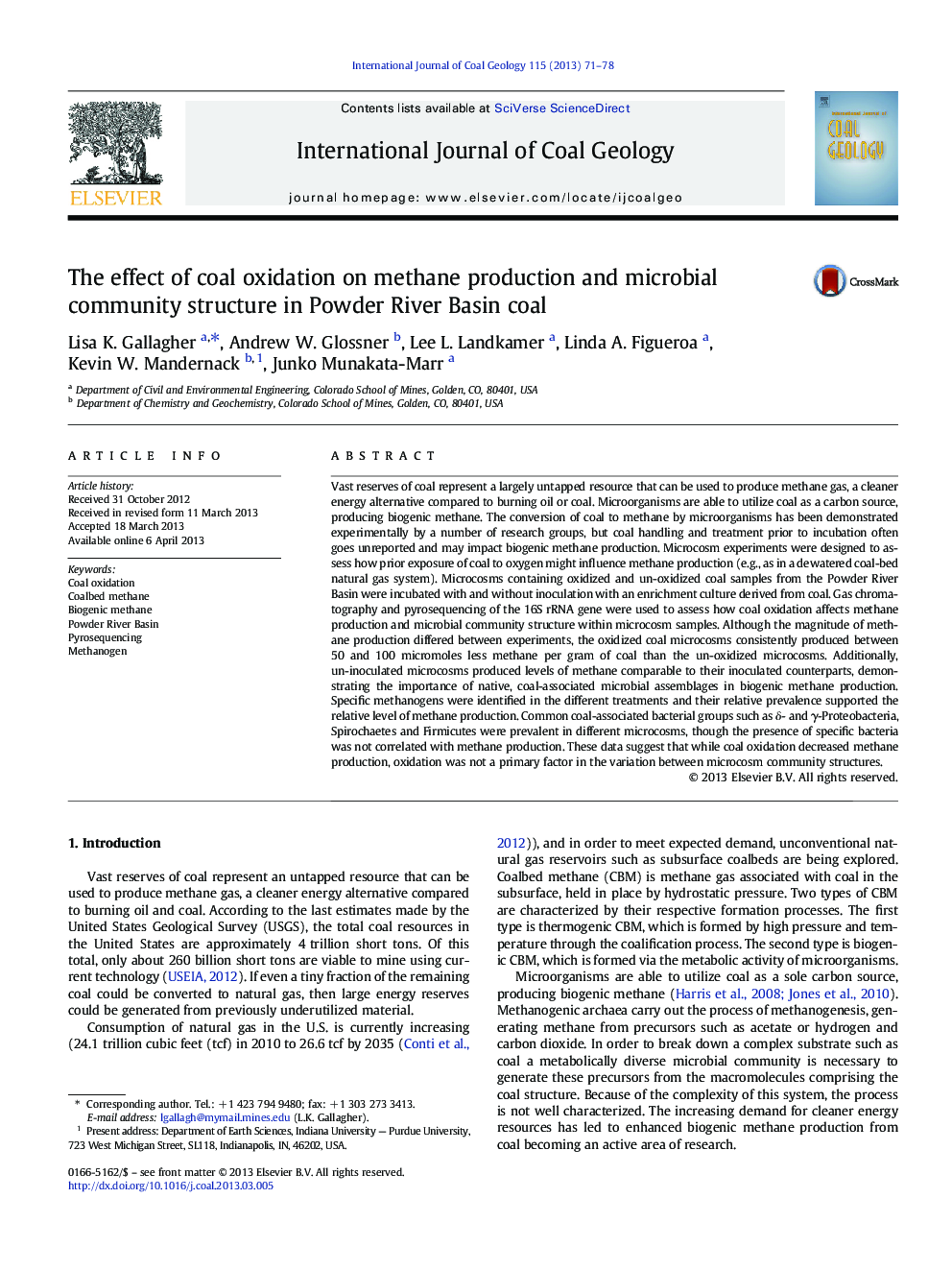| کد مقاله | کد نشریه | سال انتشار | مقاله انگلیسی | نسخه تمام متن |
|---|---|---|---|---|
| 1753298 | 1522580 | 2013 | 8 صفحه PDF | دانلود رایگان |

• In microcosm experiments, coal oxidation resulted in decreased methane production.
• Native microbial assemblages were more important to methane formation than inocula.
• Methanogen prevalence reflected extent of methane generation.
• Variable bacterial prevalence verified need for diverse microbes to degrade coal.
Vast reserves of coal represent a largely untapped resource that can be used to produce methane gas, a cleaner energy alternative compared to burning oil or coal. Microorganisms are able to utilize coal as a carbon source, producing biogenic methane. The conversion of coal to methane by microorganisms has been demonstrated experimentally by a number of research groups, but coal handling and treatment prior to incubation often goes unreported and may impact biogenic methane production. Microcosm experiments were designed to assess how prior exposure of coal to oxygen might influence methane production (e.g., as in a dewatered coal-bed natural gas system). Microcosms containing oxidized and un-oxidized coal samples from the Powder River Basin were incubated with and without inoculation with an enrichment culture derived from coal. Gas chromatography and pyrosequencing of the 16S rRNA gene were used to assess how coal oxidation affects methane production and microbial community structure within microcosm samples. Although the magnitude of methane production differed between experiments, the oxidized coal microcosms consistently produced between 50 and 100 micromoles less methane per gram of coal than the un-oxidized microcosms. Additionally, un-inoculated microcosms produced levels of methane comparable to their inoculated counterparts, demonstrating the importance of native, coal-associated microbial assemblages in biogenic methane production. Specific methanogens were identified in the different treatments and their relative prevalence supported the relative level of methane production. Common coal-associated bacterial groups such as δ- and γ-Proteobacteria, Spirochaetes and Firmicutes were prevalent in different microcosms, though the presence of specific bacteria was not correlated with methane production. These data suggest that while coal oxidation decreased methane production, oxidation was not a primary factor in the variation between microcosm community structures.
Journal: International Journal of Coal Geology - Volume 115, 1 August 2013, Pages 71–78